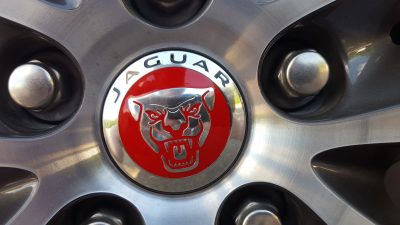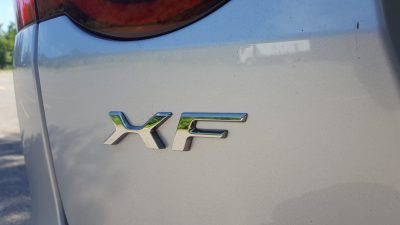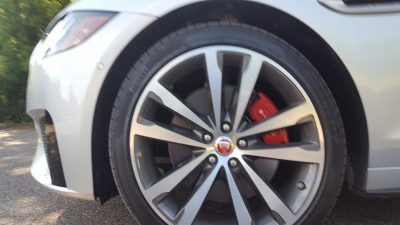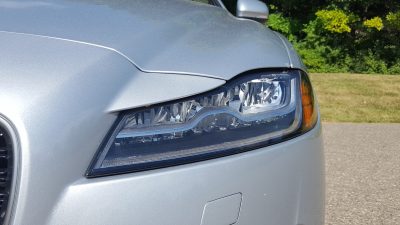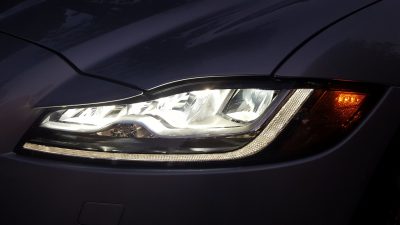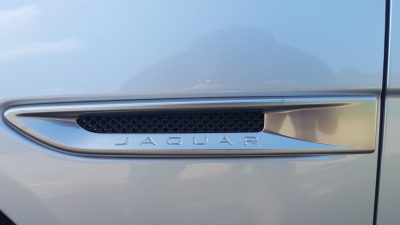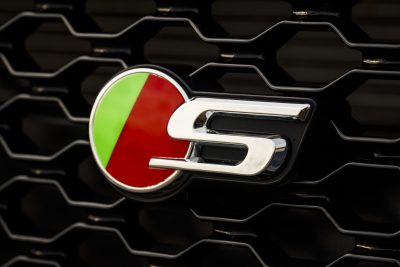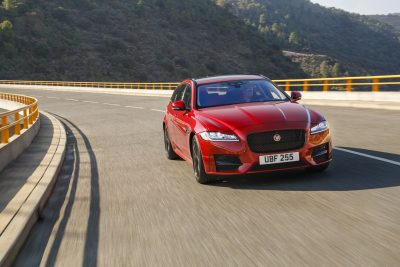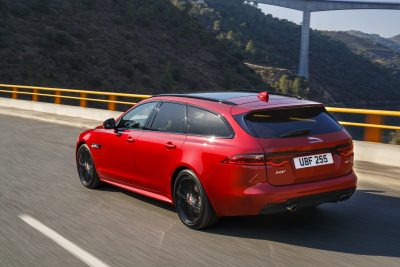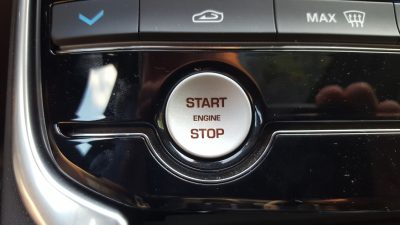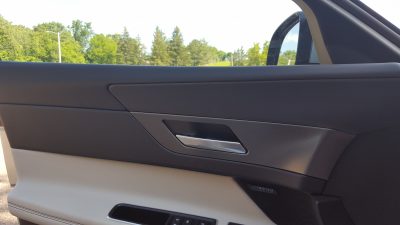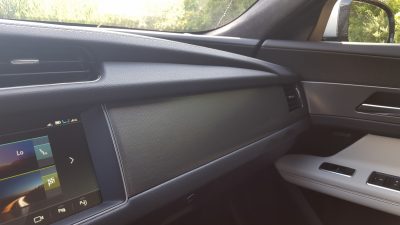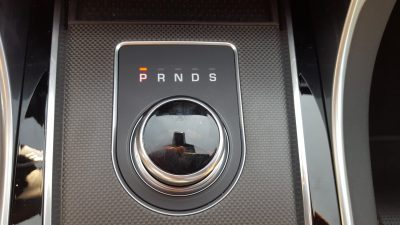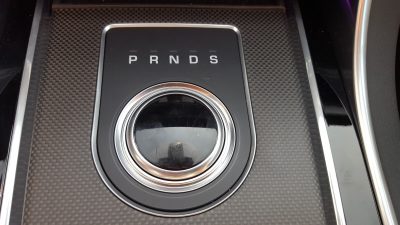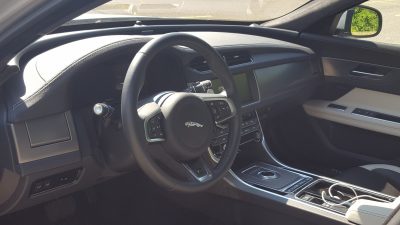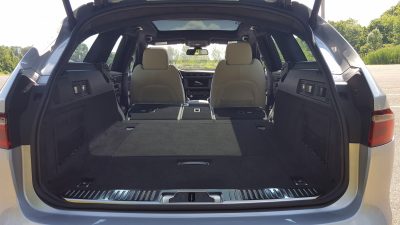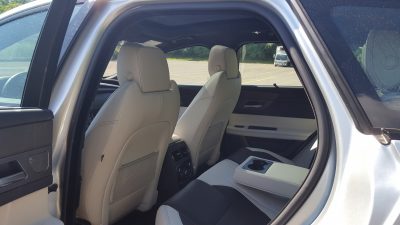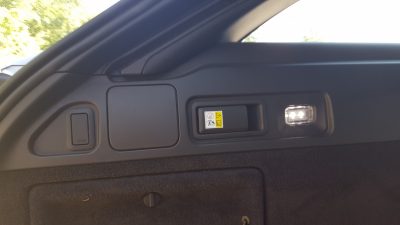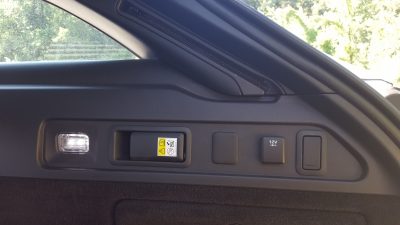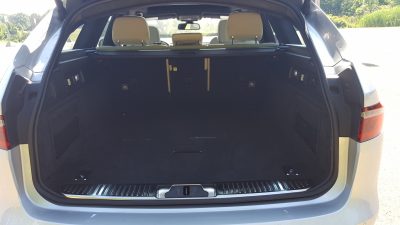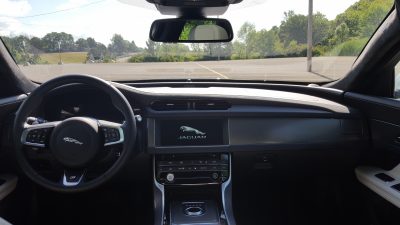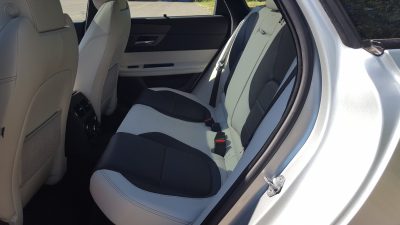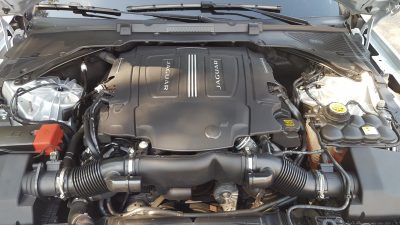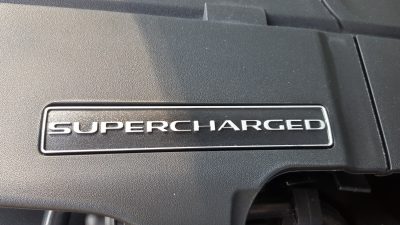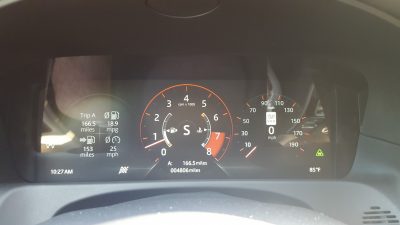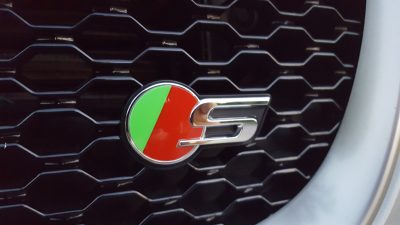When the second generation XF sedan made its debut back in 2016, it brought a more refined suit of clothes to the big cat, as well as a duet of delightfully pleasurable all new four cylinder engines to the mix. Combined with a redone interior, Jaguar hoped that the XF would be able to claw its way to the top of the luxury sport sedan segment once and for all. However, the XF ended up being a tiny drop in a very big ocean dominated by entries from Germany and Asia, and thus, its impact was decidedly less noticeable. Jaguar has not given up hope however, and with the U.S. market currently in a passionate love affair with SUVs and CUVs, Jaguar engineers have decided to try a bold yet distinctively niche approach to this challenge with the all new 2018 Jaguar XF Sportbrake S. But can this stylish wagon be the perfect contrasting element to lure in buyers not wanting to move up to a bigger F-Pace SUV?
The exterior styling of the XF Sportbrake is certainly a distinctive wrapper when viewed from a multitude of angles. The last wagon Jaguar sold here in the U.S. was the unloved and stodgy looking X-Type wagon nine years ago, which was about as successful sales wise as the 2017-2018 regular season campaign for the Cleveland Browns. Unlike that car, stodginess is nowhere to be found here, and Jaguar designers have done a good job crafting a wagon that is very stylish, sleek, and aggressive. Thankfully alot of the sedan’s traits have seamlessly carried over to the wagon, including the bold front fascia and its beefy lower air intakes. Our Indus Silver hued tester did not have quite as much visual punch as other XF colors, but the black accented front grille and other splashes of black trim helped make up for this deficit somewhat.
Wheras other wagon entries tend to feature chunky rear ends and odd roof elements, Jaguar designers fully embraced the challenge, and took advantage of the built up rear end to craft a visual masterpiece. A sleek sloping roofline leads out to a pinched greenhouse that allows the Sportbrake to boast a stylish canvas that successfully meshes functional utility with elegant lines for a truly distinctive look. A muscular body kit exclusive to the “S” trim adds a welcome dash of athleticism to the Sportbrake, and is arguably our favorite part of the whole presentation. The cargo area that is created as a result of the forementioned roof can swallow a huge amount of stuff, with the Sportbrake wielding an impressive 32 cubic feet of cargo space with the seats up. Fold them down, and that figure goes up to 70 cubic feet which is more than the bigger F-Pace. A big panoramic sunroof extends from end to end, and bathes the interior in copious amounts of sunshine.
With such a strong emphasis on elegant exterior flair, it’s a pity that the interior is a disjointed effort, with every positive being balanced by a negative that diminishes its overall curb appeal. The design of the cabin itself is very modern and inoffensive, but material and build quality is still a step or two behind German rivals. Front headroom is very poor, and the stiff flat seat cushions lack some of the plushness that we have come to expect from German rivals. Rear leg room on the other hand is arguably the best when compared with other luxury wagon offerings, but more attention to select elements, as well as more splashes of trim would have given this feline a better chance against benchmarks from Mercedes and Volvo. The XF’s rotating climate vents (arguably its trademark piece of visual gimmickry) are still on hand, but unlike older XFs, only the center vents get in on the act, but despite this, it’s still a very nice James Bond-esque touch that will certainly be a potent conversation starter among passengers.
Visibility in the XF Sportbrake is fairly decent with the front and side windows offering good views of the road. Predictably, the sloping rear roof line, and the chunky rear pillars it creates do produce sizable rear blind spots, but the BLIS system in our tester (part of the $3,495 Driver Assistance package) helped take much of the anxiety out of passing maneuvers, and parking in tight spaces was relatively easy.
Our tester featured Jaguar’s InControl Touch Pro system, but it’s clear that Jaguar software engineers still have a bit of work to do, with the satellite radio in our car abruptly going on holiday during its first day with us. The radio returned from its digital vacation the next morning, and this allowed us to fully explore the system in detail. Unlike other infotainment systems, Jaguar’s unit features a four panel home screen that is laid out well, and sharp menu graphics that even include distinctively British Easter eggs (i.e an old world phone booth in the phone menu that was lovingly called the Tardis by Emily.)
Like other JLR infotainment systems, this one does not offer Apple CarPlay or Android Auto capability, but buyers can connect their devices through a myriad of other ways including Bluetooth, an auxiliary input jack, or one of the two standard USB ports. There were occasional bouts of lag, but typically, the system was quick to respond to inputs, and is a noticeable improvement from the British marques’s prior attempts at giving its elite clientele an infotainment system that can match German benchmarks. InControl Touch Pro also brings a potent 825-watt Meridian Surround Sound system that sounds marvelous, and it does an excellent job delivering crisp tones to eager listeners. However, be prepared to pay dearly for both of these features, since they are part of the optional $3,265 Technology Package.
While the interior may have some head scratching compromises, there is no penalty when it comes to driving the XF Sportbrake out on the road, this is a fun wagon to toss around. While the rest of the XF range boasts two four cylinder engines for more green minded buyers, the Sportbrake is only available in either “S” trim or 30t guises, which in turn makes the 3.0 liter supercharged V6 the sole engine available. Despite this particular engine being long in the tooth (it has been around since 2014) there’s still plenty of power to be found here. Good for a solid 380 horses (lesser V6 XFs make do with a slightly tamer 300 ponies) the engine pulls with vicious ferocity from stop lights, and the supercharger whine is a relaxing change of pace from the turbocharger woosh that has come to dominate the luxury car segment. When it comes to who would win in an old fashioned dogfight, the Porsche Panamera Sport Turismo is the quicker of the two, but the Jag’s 5.1 second 0 to 60 time is nothing to scoff at, and its all-wheel drive system ensures that all the power is delivered to the road in earnest.
An eight speed ZF sourced automatic shifts through the gears, but while it does a good job going about business in a reasonably crisp manner, it lacks the polish that we have come to expect from competing entries. The transmission is also slow to kick down a gear or two when more power is needed for passing maneuvers. That latter item is largely remedied when the transmission is shifted into Sport mode and is paired with the car’s dynamic mode, which transforms the Sportbrake into a delectable drivers car that channels the spirit and sporting character of the brand.
Handling in our tester was top notch, and our drive in Metro Detroit (as well as a prior encounter in Wisconsin) revealed that the Sportbrake has a slight edge in dynamics over the bigger F-Pace, with far less bodyroll than its bigger corporate cousin. The Sportbrake weighs just over 4000 lbs, but its heft was barely noticeable, with the car delivering good amounts of grip, and just the right amount of power assist from its electric power steering, especially in sharp cornering. Our lone complaint centers around the steering wheel shift paddles. They do a good job, but they are a bit too small for bigger hands, and feel too flimsy for this type of car. Braking was smooth and predictable, with our tester recording strong stops from a variety of speeds.
Pricing for the 2018 Jaguar XF Sport brake reflects the niche segment that it is trying to appeal to. Unlike other XFs, there is no base model, with the Sportbrake being available in either “S” trim, or 30t AWD, with the latter trim making it avalible in Prestige trim only. The former denotes mid-range performance in Jaguar’s model hierarchy, and that also means buyers will have to pay accordingly for the privilege of owning one. Base Sportbrake models start at $64,575, but “S” grade models like our tester start at $71,215, with our car’s list of options causing the final sticker to climb to a whopping $84,245. This is more than the Volvo V90, but is somewhat less expensive than the Mercedes E-Class wagon. The Mercedes makes up for the price gap by offering a V8 performance model, as well as better interior quality and materials. Meanwhile, the Volvo opts for simplistic elegance with its interior, but the functionally awkward SENSUS system falls short of matching the Jag’s unit and the V90’s twin-charged four cylinder is not quite as adept at sporty driving as the Jag’s V6.
When looked at for what it is, the 2018 Jaguar XF Sportbrake S certainly has alot going for it. The exterior styling is seductive and the driving experience is arguably one of the best in the luxury wagon segment. That said, the Sportbrake lacks some of the finer details that truly create a complete ownership experience, and it also faces pressure from CUV and SUV entries including the E and F-Pace. Despite these flaws, we would still buy one if we could, especially since it does a good job following the tradition established by Sir William Lyons when he first founded the company, and faithfully lives up to the measuring stick that was set in place by its ancestors.

Carl Malek has been an automotive journalist for over 10 years. First starting out as a freelance photographer before making the transition to writing during college, his work has appeared on numerous automotive forums as well as websites such as Autoshopper.com.
Carl is also a big fan of British vehicles with the bulk of his devotion going to the Morgan Motor Company as well as offerings from Lotus, MG, and Caterham. When he is not writing about automobiles, Carl enjoys spending time with his family and friends in the Metro Detroit area, as well as spending time with his adorable pets.


